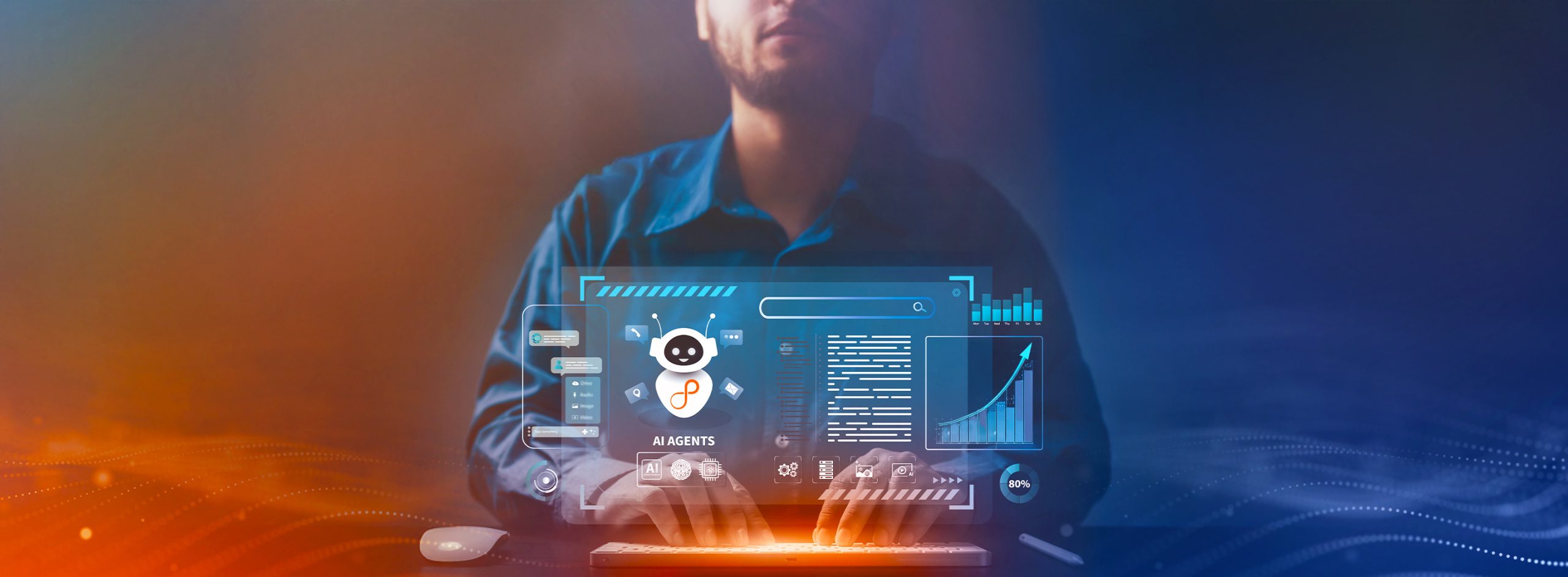Artificial Intelligence (AI) continues to change many aspects of modern life, from chatbots handling customer requests to voice assistants answering everyday questions. One of the most promising developments in AI is the combination of two unique concepts: Retrieval Augmented Generation (RAG) and autonomous AI agents. Together they form Agentic RAG, an innovative development to transform how businesses engage their customers, researchers explore new areas, and individuals communicate daily.
Retrieval Augmented Generation (RAG) technology refers to AI models that use external sources to generate original material. Rather than using static training datasets, RAG uses new, up-to-date data obtained from indexed documents or web pages. This methodology enables RAG-powered bots to remain relevant in quickly changing subjects while providing richer outputs than previous methods.
Autonomous AI agents refer to software programs that operate independently inside their settings. These intelligent virtual beings evaluate several possibilities before determining the best action to achieve the intended results. They successfully manage tasks while ensuring that they are in line with their intended goals through ongoing monitoring and adaption.
By merging autonomous agents and RAG, we obtain Agentic RAG: a novel approach that allows AI systems to dynamically retrieve, analyze, and apply crucial data during interactions, decision-making, and task fulfilment.
Practical RAG Implementation
Consider, for example, what’s possible when applying Agentic RAG on an eCommerce portal that sells everything from electronics to fashionable products. To improve the client experiences, the company introduces an AI shopping assistant based on Agentic RAG principles. Below are examples of potential outcomes.
- User search analysis: When a user types in a search query (“GPU enabled 16GB laptop”), the agent parses the text and extracts keywords such as “GPU” and “16GB” along with related information (such as category, brand, and display size).
- Document retrievals: The agent uses search engines or API calls to locate relevant documents containing product listings that fulfil the search parameters. It can also use previous inventories, price patterns, or sales data to get further information.
- Data interpretation: After collecting the required data, the agent compares it with the state of the market, ongoing offers, or user preferences. For example, it might suggest discount coupons, promote brands, suggest comparable products, or notify the site administrator when stock levels are low.
- Response generation: Using RAG, the agent creates a summary of options and explanations for decisions. It also provides links that drive users to specific websites, making navigation easier and evaluating user behavior.
Agentic RAG bridges the gap between raw data and structured output, offering end users with valuable insights from multiple perspectives.

Benefits of Agentic RAG
Several aspects differentiate Agentic RAG from typical RAG implementations:
- Dynamic Learning: Unlike traditional models, which are trained just once on domain data, Agentic RAG actively learns new knowledge by constantly exposing itself to live inputs and retrieved documents. Continuous learning ensures that you stay current in an ever-changing world.
- Semantic Coherence: Integrated intelligence allows Agentic RAG to recognize semantic arguments that are typically overlooked in keyword-based searches. As a result, it better understands context, resulting in increased accuracy and recall.
- Proactive Engagement: In addition to answering inquiries, Agentic RAG starts discussions, promotes alternatives, or suggests follow-up activities based on detected interests.
- Real-time Personalization: Through customizations driven by user profiles, browsing histories, and live situational awareness, Agentic RAG provides output to individual preferences and enables connections between platforms and consumers choices.
| Feature | Regular RAG | Agentic RAG |
|---|---|---|
| Primary Functionality | Text generated using external sources for reference | Actively senses, reasons, and acts upon acquired knowledge from external sources |
| Agency | Tool integrated within NLP pipeline; not an autonomous entity | Independent decision-maker capable of taking initiatives and responding to dynamic scenarios |
| Complexity | Lower due to limited functionality and independence | Higher due to advanced functionalities requiring autonomy, real-time decision making, and active interaction with the environment |
| Knowledge Updates | Needs periodic updates and retraining | Dynamic learning from real-time interactions and document retrievals |
| Real-World Utility | Primarily focused on accessing updated information | Enables holistic interaction management, proactive engagement, real-time personalization, and dynamic learning |
| Potential Industry Usage | Consumer-facing applications such as chatbots, customer support, and FAQ generation | High-value applications demanding greater sophistication, resiliency, and flexibility spanning multiple verticals |
With its ability to handle complex queries backed by real-time data, Agentic RAG has multiple potential applications and outcomes across various vertical industries.
- Healthcare: Healthcare professionals could use Agentic RAG to remain updated on the latest medicines, recommendations, and clinical studies, improving patient care delivery and safety standards.
- Research: Scientists working with enormous amounts of literature can use Agentic RAG to refine results, discover developing trends, and identify collaborative relationships more quickly compared to human review.
- Education: Virtual teaching assistants utilizing Agentic RAG could deliver personalized feedback, course modifications, and study material suggestions based on students’ progress and competency level.
- Finance: Financial analysts can benefit from Agentic RAG’s ability to integrate many bits of financial news, economic data, and trade information, resulting in investment plans that are matched with current financial trends, recognized risks and predicted returns.
Agentic RAG is a synergistic combination of the latest AI technologies designed to enhance human-machine interactions far beyond existing standards. Although each has its place within an enterprise, Agentic RAG outperforms standard RAG in terms of usefulness, flexibility, and application for tackling complex issues in a variety of sectors.
To know more about our AI offerings and learn how Agentic RAG could deliver value for your enterprise, reach out to us today.
Author’s Profile
Dinesh Rivankar
Senior Data Scientist







